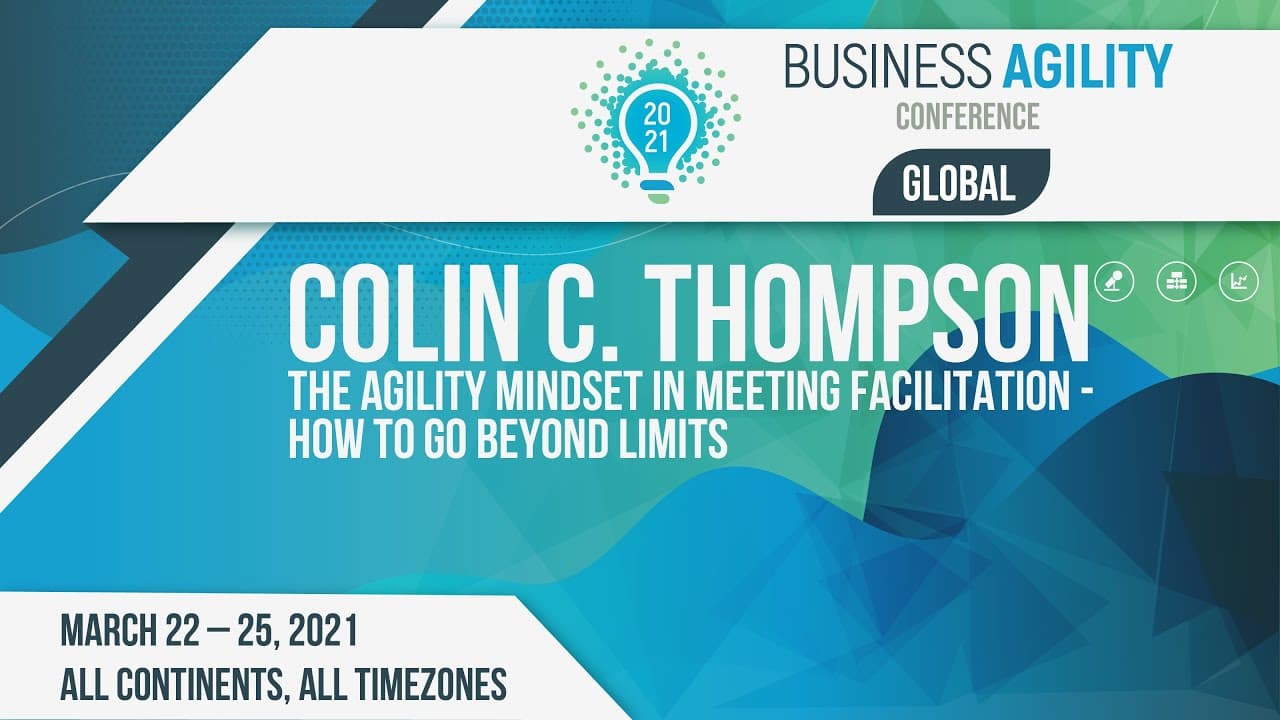First of all, it’s great to be here on day four to wrap up this incredible global conference. Today, I’m going to be talking to you about facilitating meetings with an agile mindset. I want you all to have fun during this session.
Over the past four days, we’ve heard many great sessions and speakers—some technical, some emotional—covering a wide range of topics. I even had to Google a few terms I heard! But today, we’ll focus on something that everyone here is experienced with: how to manage meetings effectively.
I have about 20 minutes, and I’ll do my best to stay within that time. We all know the impact of meetings in the workforce—some are productive, but many are not. The cost in time and money is significant, which is why it’s so important to ensure that meetings are highly effective.
The Importance of Agile Meetings
One of the key elements of organizational agility is the ability to course-correct quickly. When we talk about facilitating meetings with an agile mindset, what does that really mean?
- We want to increase employee morale and productivity. The more energized someone is, the more productive they are.
- Collaboration and diverse ideas are essential. If you have a diverse workforce but no collaboration, you won’t reach your goals.
- The ability to quickly adapt to changing circumstances is key in agile facilitation.
To get the most out of this session, I ask that you take off your usual professional hats—whether you are a trainer, developer, or manager. Instead, put on your facilitator hat. If you’re not a facilitator, just come with an open mind and be ready to learn.
Understanding the Role of a Facilitator
Let’s establish a common understanding of what facilitators do. Trainers, for example, ensure that participants achieve a learning objective. This can be informational or instructional, but the goal is always learning.
Facilitators, on the other hand, have a different role. Their goal is to help participants achieve the meeting’s objectives. Whether that’s making a decision, developing an action plan, or resolving a conflict, the facilitator guides the process from start to finish.
Who Is Responsible for Achieving the Meeting’s Goal?
Here’s a question that often sparks debate: Is it the facilitator’s responsibility to ensure that the meeting’s goals are met?
My answer: 100% yes. If a meeting has no facilitator, then yes, the team is responsible. But if you are facilitating, your role is to ensure the team reaches the goal. You are not a subject matter expert, a developer, or any other role—you are there to facilitate. We can discuss this further in the Q&A.
The Agile Mindset in Meeting Facilitation
The agile mindset is about problem-solving and quick adaptation. Here’s how it applies to facilitation:
- See failures as opportunities for learning.
- Break meetings into smaller, time-boxed segments to ensure efficiency.
Raise your hand if you’ve ever been in an unproductive meeting that didn’t achieve its goal. (I see a lot of hands up—thank you!) Unproductive meetings are one of the most frustrating experiences for teams. So, let’s discuss how to avoid them.
Common Meeting Challenges
Last week, when discussing this topic with facilitators Marcus and Stefan, we identified two major pain points:
- People not being prepared and staying engaged.
- Handling technical glitches effectively.
We will go through five scenarios, focusing on people-related and technical challenges.
People-Related Challenges
1. Lost Perspective
This happens when discussions start at a high level but then dive too deep into technical details, losing focus. For example, a meeting might start with a discussion about how two systems aren’t integrating, but 10 minutes later, we’re debating the architecture of both systems. This leads to lost time and disengagement.
2. Lost Context
Sometimes, discussions become emotionally charged and veer off-topic. For example, a conversation about report submission delays could shift into complaints about a hiring freeze, company leadership, or past policies. While these issues may be valid, they aren’t relevant to the meeting’s goal.
3. Lost Time
Unmanaged discussions lead to meetings running overtime. A 90-minute meeting might allocate 20 minutes per topic, but 45 minutes in, we’re still discussing the first item. This derails the meeting and wastes time.
How Facilitators Keep Meetings on Track
Facilitators must be bold and proactive. Here’s how:
- Step in quickly when discussions go off track.
- Call out unproductive behaviors while maintaining trust.
- Redirect discussions without embarrassing or isolating participants.
- Use soft interventions (“This is an important discussion, but let’s table it for later”) when appropriate.
- If necessary, be firm: “We need to move on.”
Technical Challenges in Virtual Meetings
Facilitators must now manage a new set of problem-solving skills due to virtual meetings. Common issues include:
- Bandwidth problems
- Browser issues
- Lagging audio
- Screen sharing failures
- Participants forgetting to unmute
- Background distractions (yes, including toilet flushes!)
- Zoom fatigue
Solutions for Effective Facilitation
1. Utilize Visual Tools
Use collaboration tools like Trello, Miro, or MURAL to keep participants engaged and ensure active participation.
2. Implement Time Management Best Practices
Good facilitators:
- Start and finish on time.
- Time-box discussions.
- Use quick decision-making techniques like the 5-5-5 vote (five fingers = strongly agree, one finger = disagree, etc.).
3. Follow an Online Meeting Routine
- Send an agenda early to set expectations.
- Conduct a test login session before the meeting.
- Prepare your space to avoid interruptions.
- Encourage cameras on for engagement.
- Randomly call on participants to keep them involved.
Conclusion
By applying these techniques, facilitators can run effective, engaging, and productive meetings. The more engaged participants are, the more valuable the outcomes.
Contact Information: You can find me on LinkedIn—feel free to connect!
Thank you for your time! I look forward to the Q&A session.



